Decorated border graffiti
/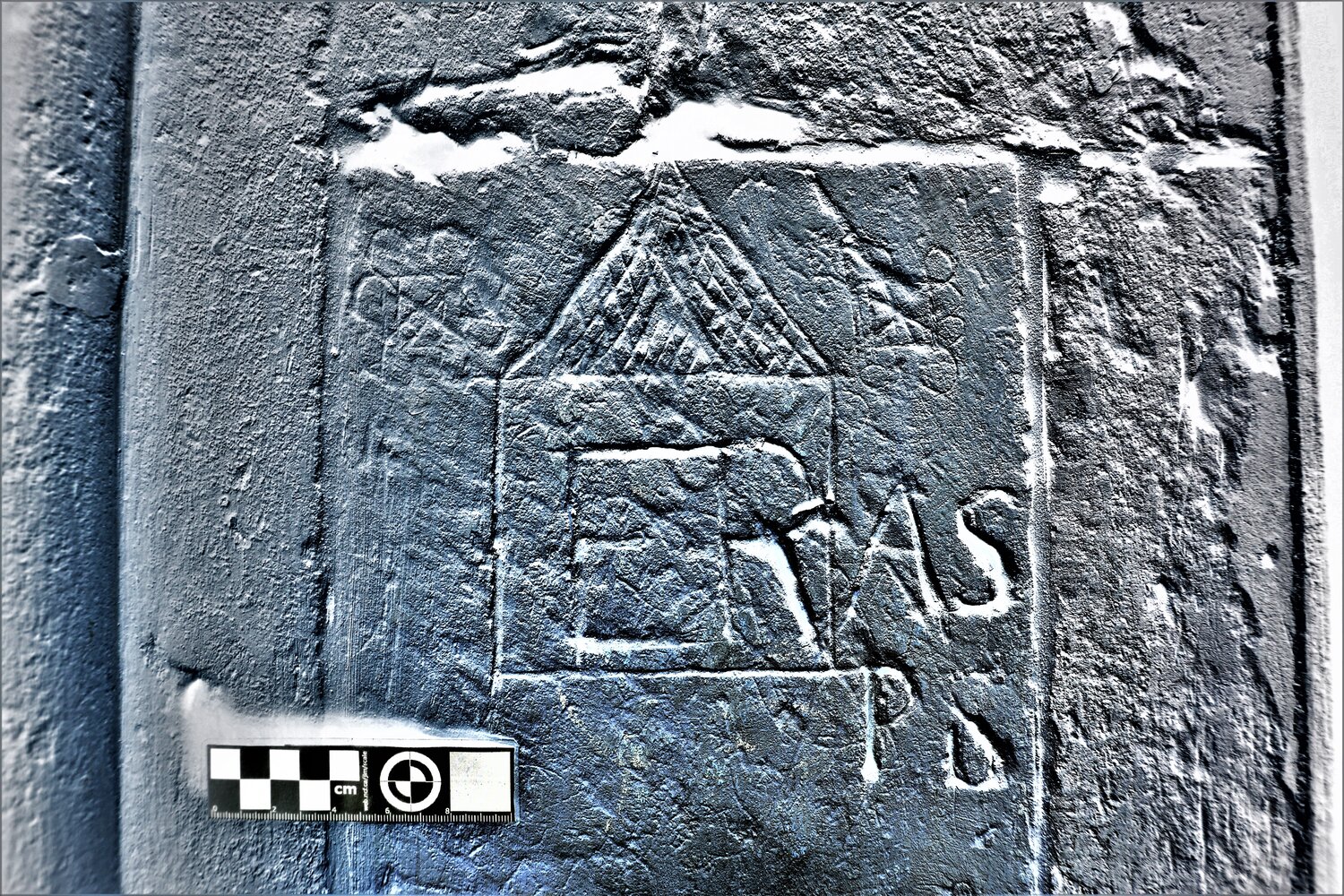
Decorated border graffiti
September 23, 2021
Initials within a square border and architectural canopy or pitched roof are traditionally thought of as small and inexpensive replicas of the wall monuments appearing for the upper and middle classes - but is this the case?
The marker of a family member or friend of a loved one who otherwise may have gone completely unrecorded (Champion 2015, 203). Although often difficult to decipher, most of these designs include a letter or a set of different initials outside the border, interpreted as those of the person creating the inscription.
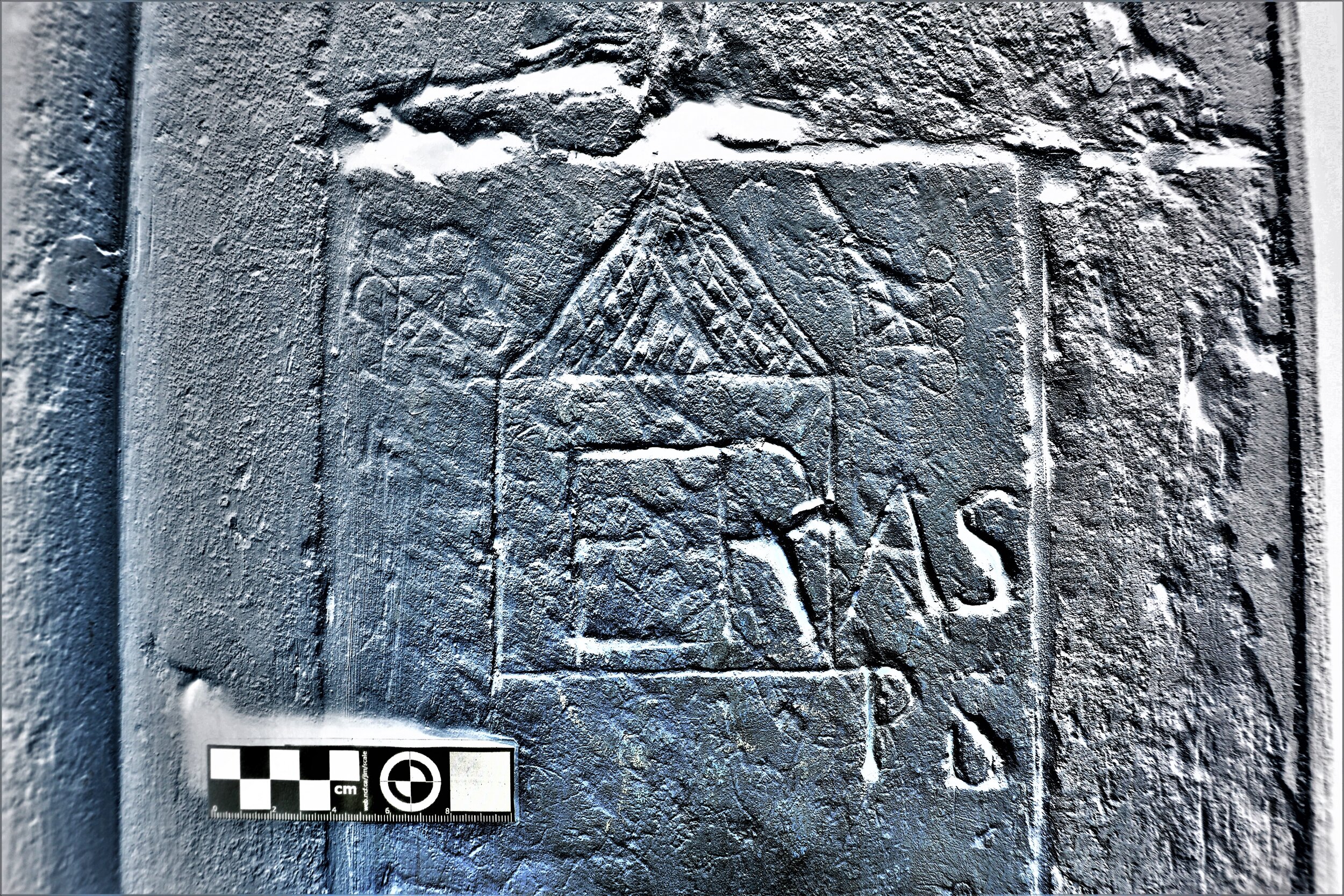
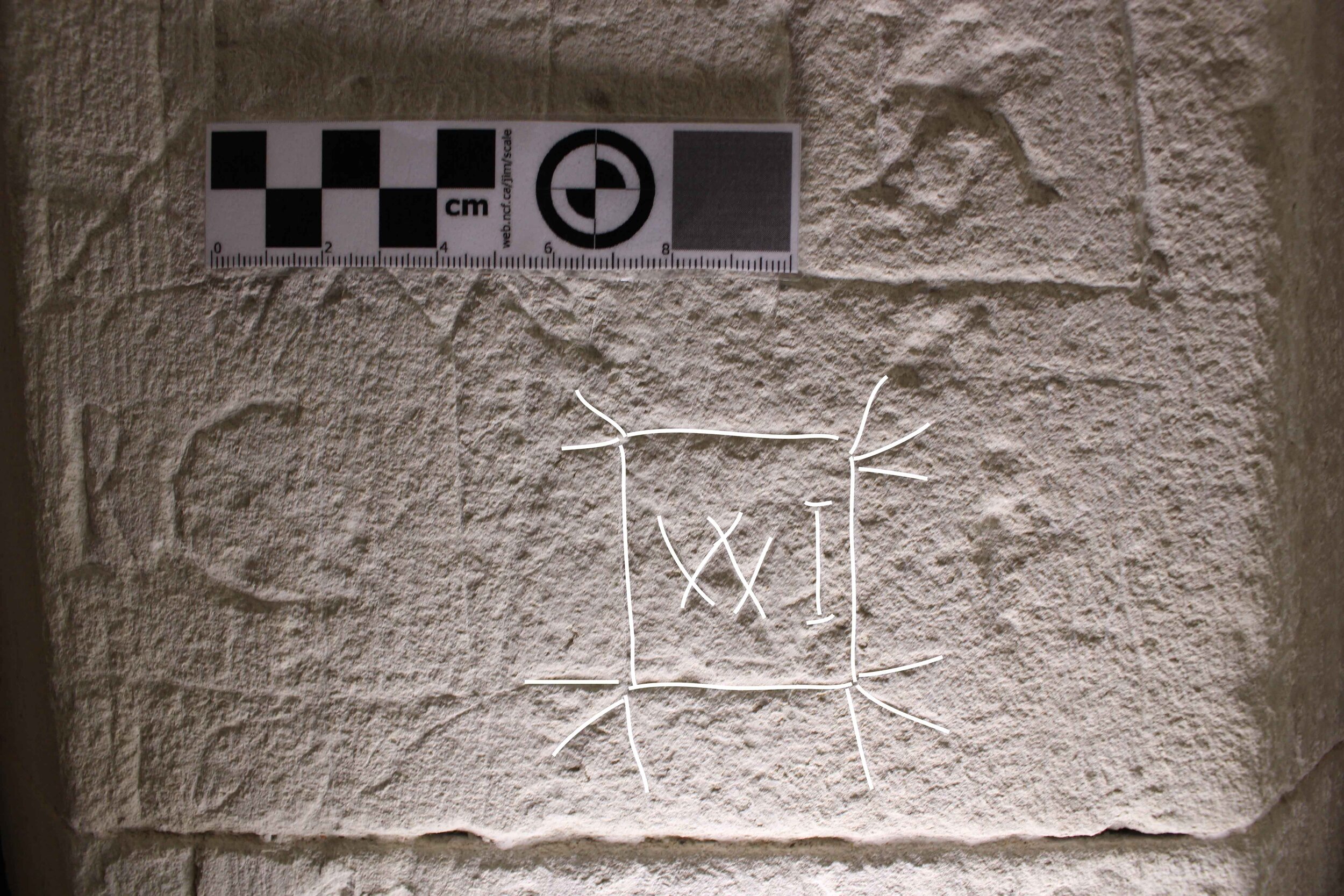
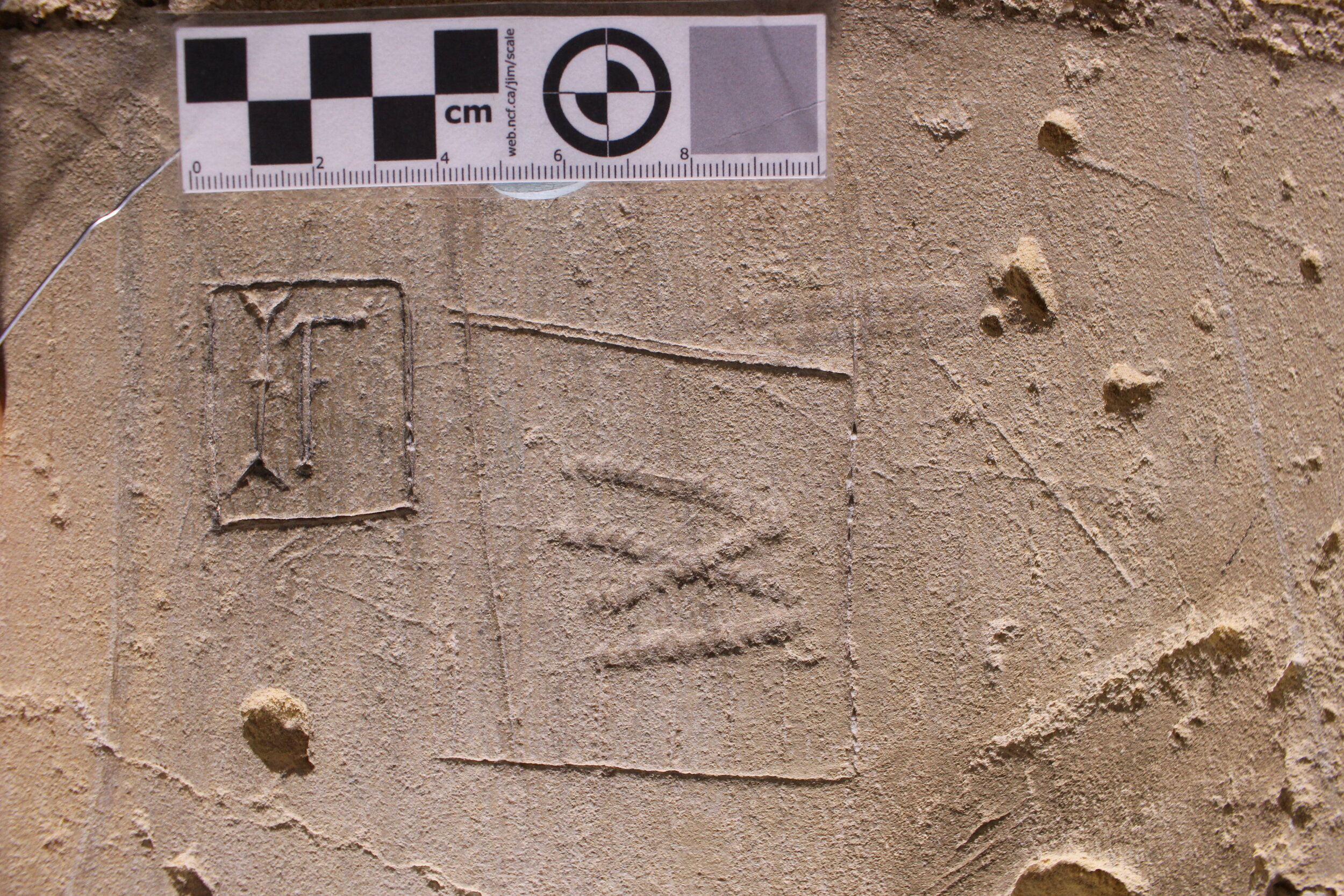
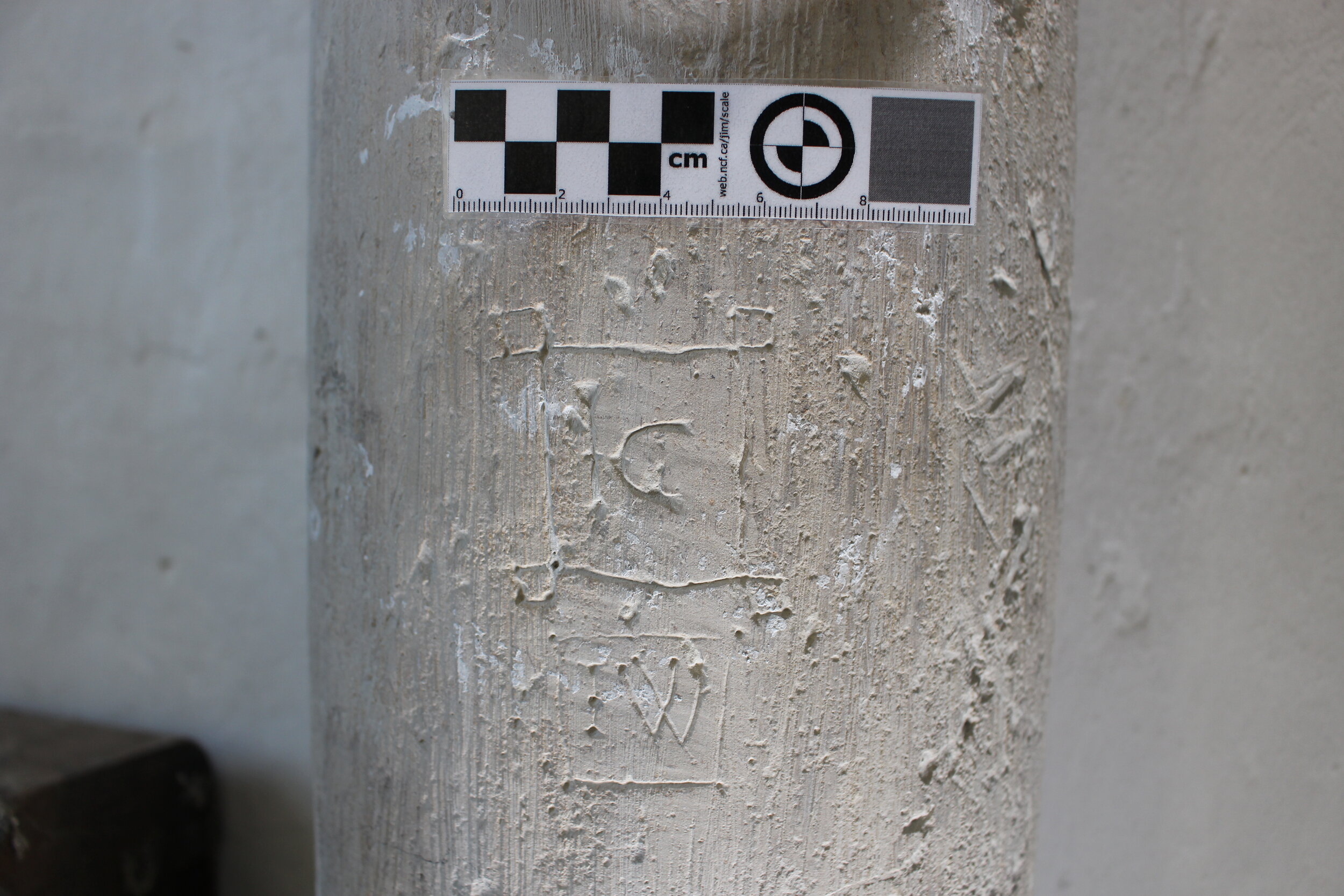
However, these often take the form of a crossbar I or VV monogram. Champion notes that attempts to match the initials within inscriptions of this type with parish burial records have largely been unsuccessful. So it has been suggested that these inscriptions commemorate those who died abroad and their bodies not returned home, in battle or lost at sea, for example. The lack of a Christian burial would have been traumatic for the bereaved. A memorial within the house of God may have offered some form of much-needed consolation. Champion (2019) provides a further study of graffiti commemoration. Some earlier inscriptions clustering around tombs and monuments are thought to be communications with the dead, in an evolving funerary tradition with comparisons to earlier medieval votive inscriptions (Nugent 2018).
Challenges to the interpretation of these designs remain. Almost all examples include only one date or year. Friends or even some family members may not necessarily know for certain the departed’s year of birth. However, the complete exclusion of two dates in all examples from Rochester seems more likely to indicate a one-event commemoration.
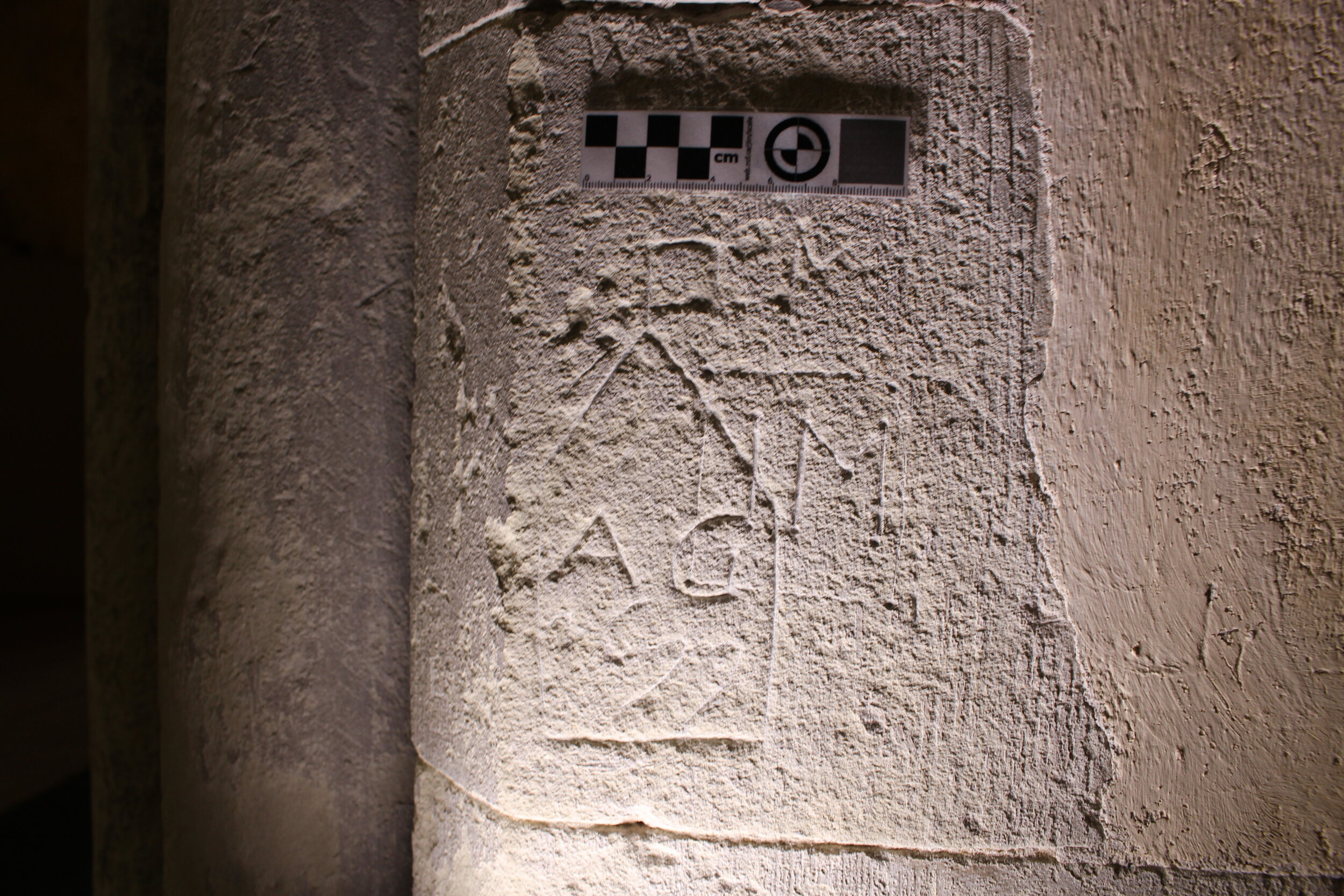

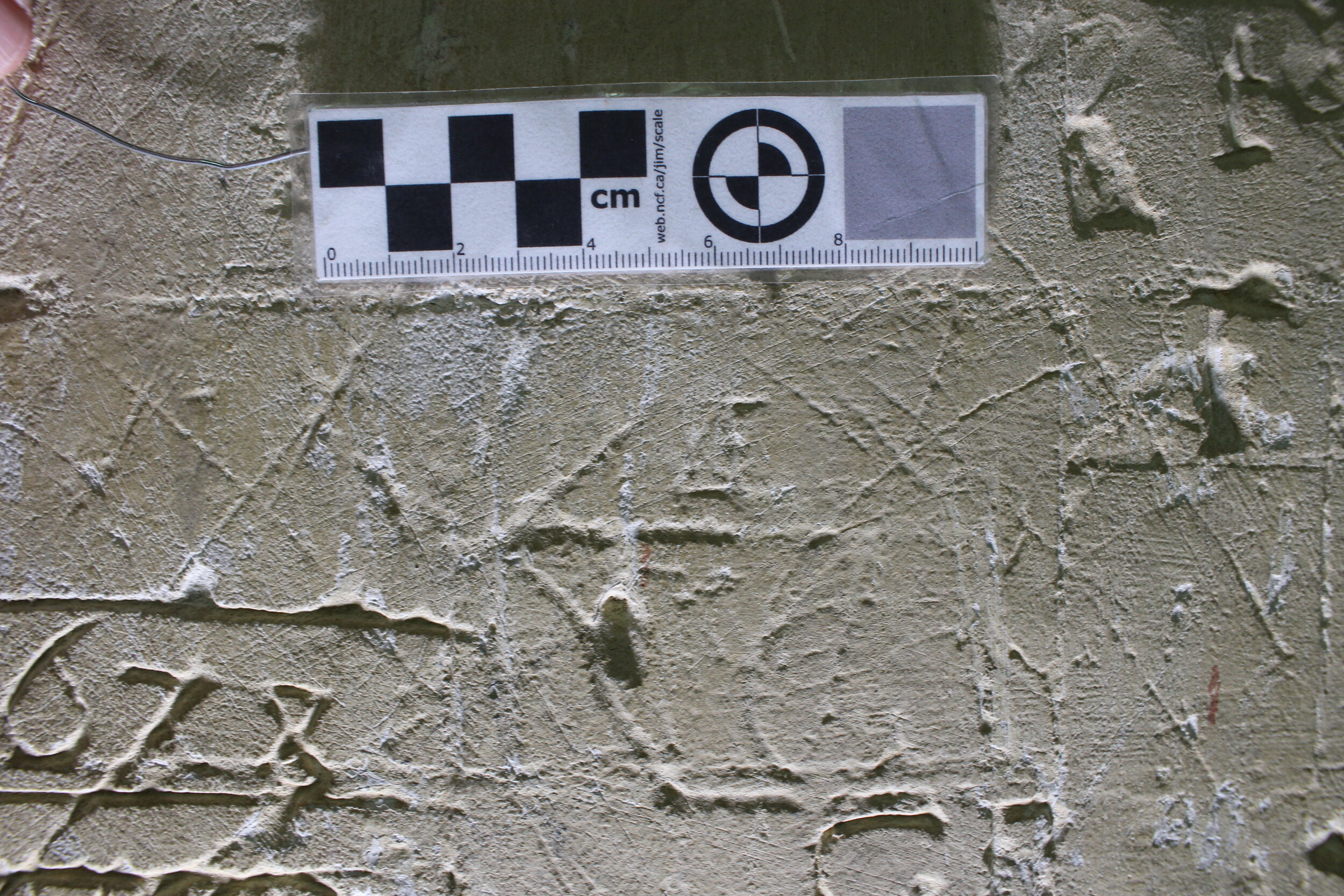
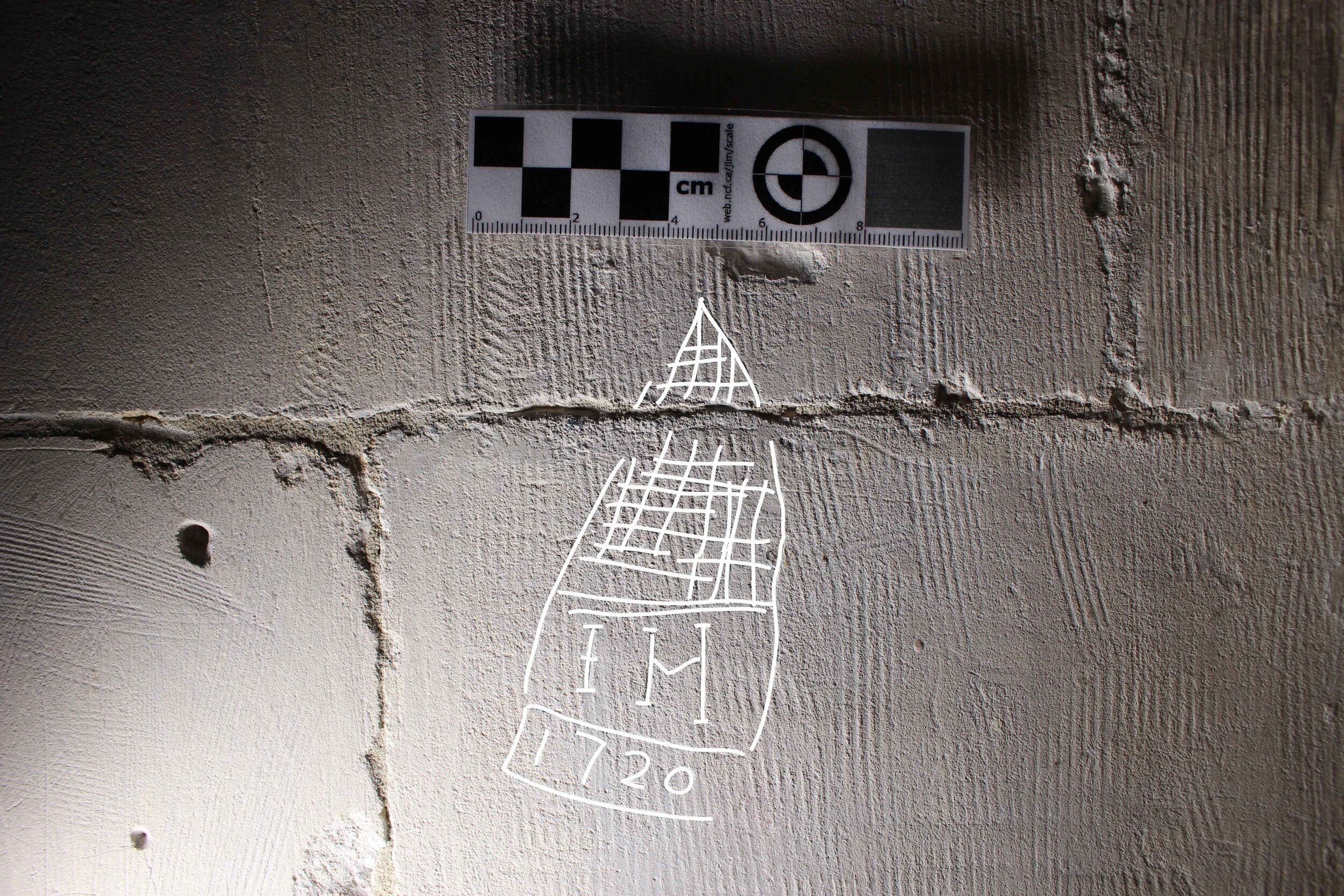
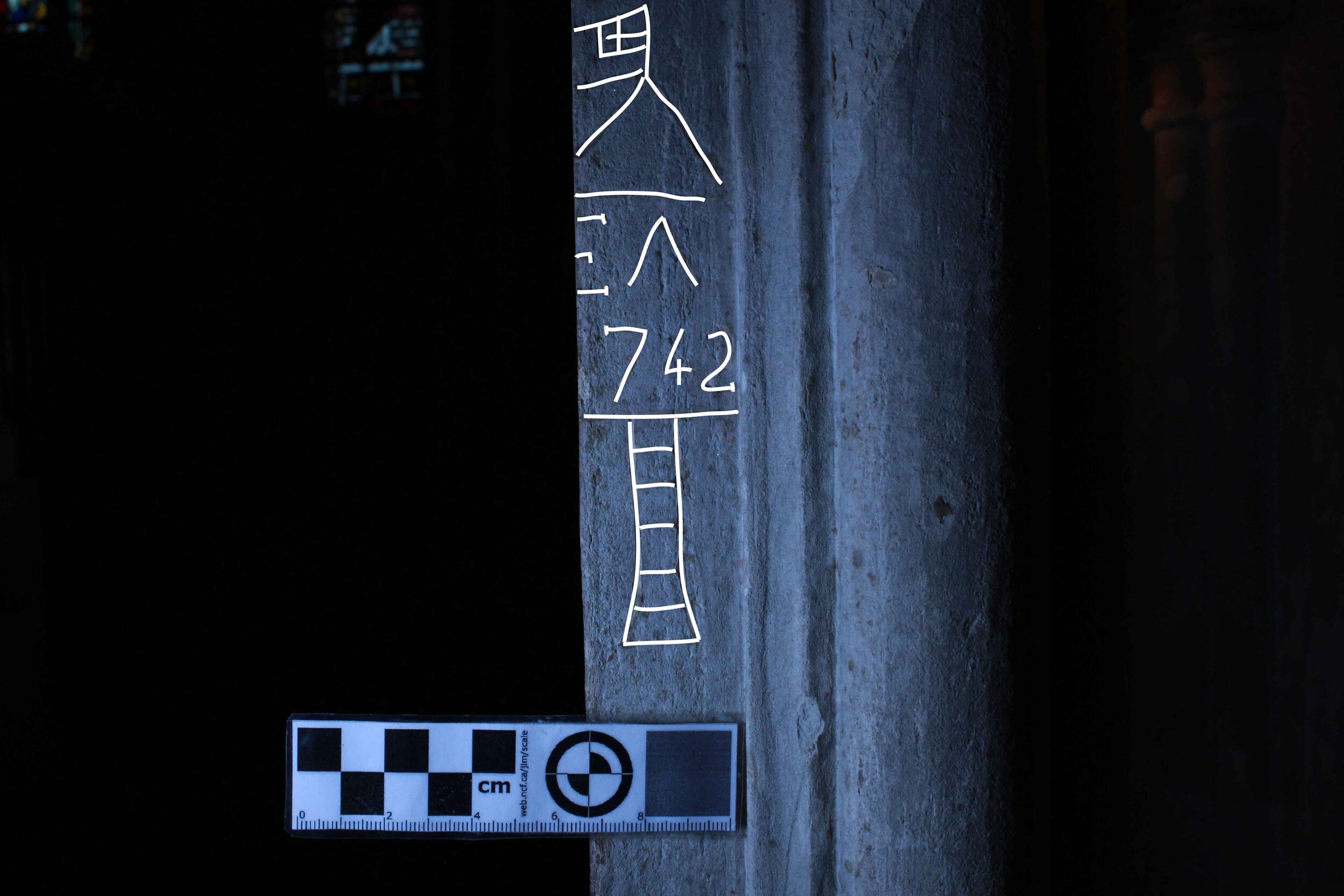
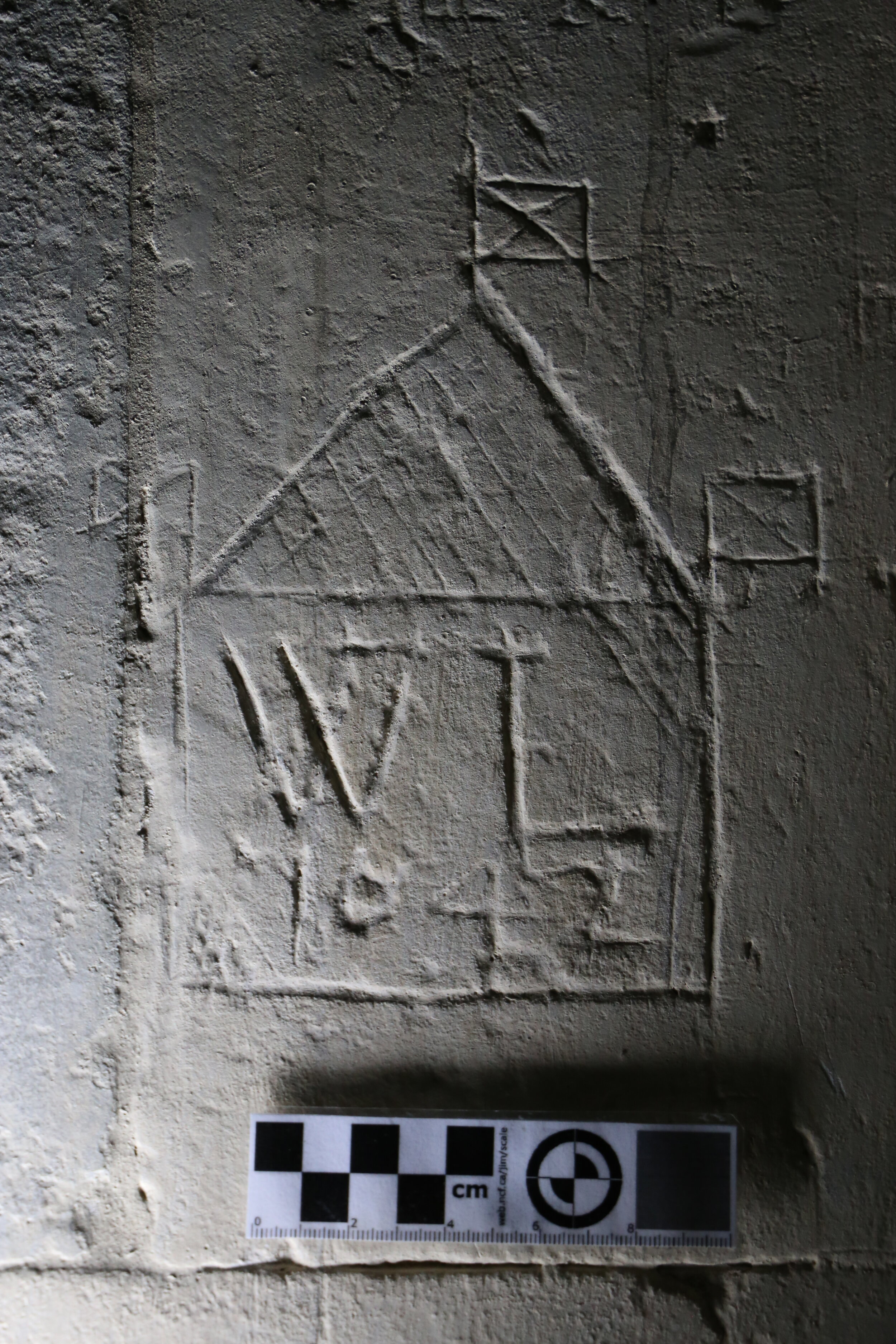
One hundred and seventeen bordered inscriptions are recorded. Twenty-eight of these contain dates, from the 1640s to the 1730s. Only four are below 1m in height. Sixty-six examples feature only a single-line border with no pitched canopy/roof featured. Twenty-two include simple two or three-line roofs, and four include depictions of possible tiles or lead sections. Six include small flags, and one has two crucifixes protruding from its roof. Only two of the more elaborate designs are dated, 1642 and 1731. Several feature irregular shaped borders: three triangles, two lozenges, a heart symbol and a twentieth-century clear imitation of a frame/plaque. Sixteen include the stylised letter W discussed above. Only two contain complete forenames: one crude example with an apparent couple Kate and Will and the other, resembling a medieval inscription, John. Nine contain full surnames, but none of these are dated, significantly complicating identification.
One inscription on a shaft to the south of the entrance to the north quire aisle appears to depict a three-dimensional building. Although care is required in suggesting the motivations of many unrelated individuals over several centuries, such examples make a funerary interpretation of these particular forms of decorated inscriptions less certain. Virtually any graffito that interpreted as commemorating a death could be a visiting worshipper, pilgrim or tourist leaving an inscription as a record of their visit and providing a means of distinguishing it from the thousands of other names and text.
Clustering can be observed in these designs: on the north wall of the Lady Chapel, in proximity to the tomb of John de Bradfield dating to c.1283, and possibly in association with the tomb of Hamo de Hythe dating to c.1352. The majority of the bordered inscriptions within these clusters appear to be far more recent than the dates of the tombs. A small fragmentary cluster occurs on the east face of the pier opposite the site of the medieval altar of St Peter in the south quire transept.
The tradition of leaving votive ships and other images close to shrines in the Middle Ages to assure safe passage or other benefit may offer an ethnographic analogy. As the VV monogram and crossed I are being incorporated within the earliest seventeenth-century bordered inscriptions, could they be commemorating (and immortalising) a visit during which a form of spiritual protection was sought?
The photographic graffiti survey at Rochester Cathedral begun in 2016 has recorded over 7,000 inscriptions from the 12th to the 21st century.





